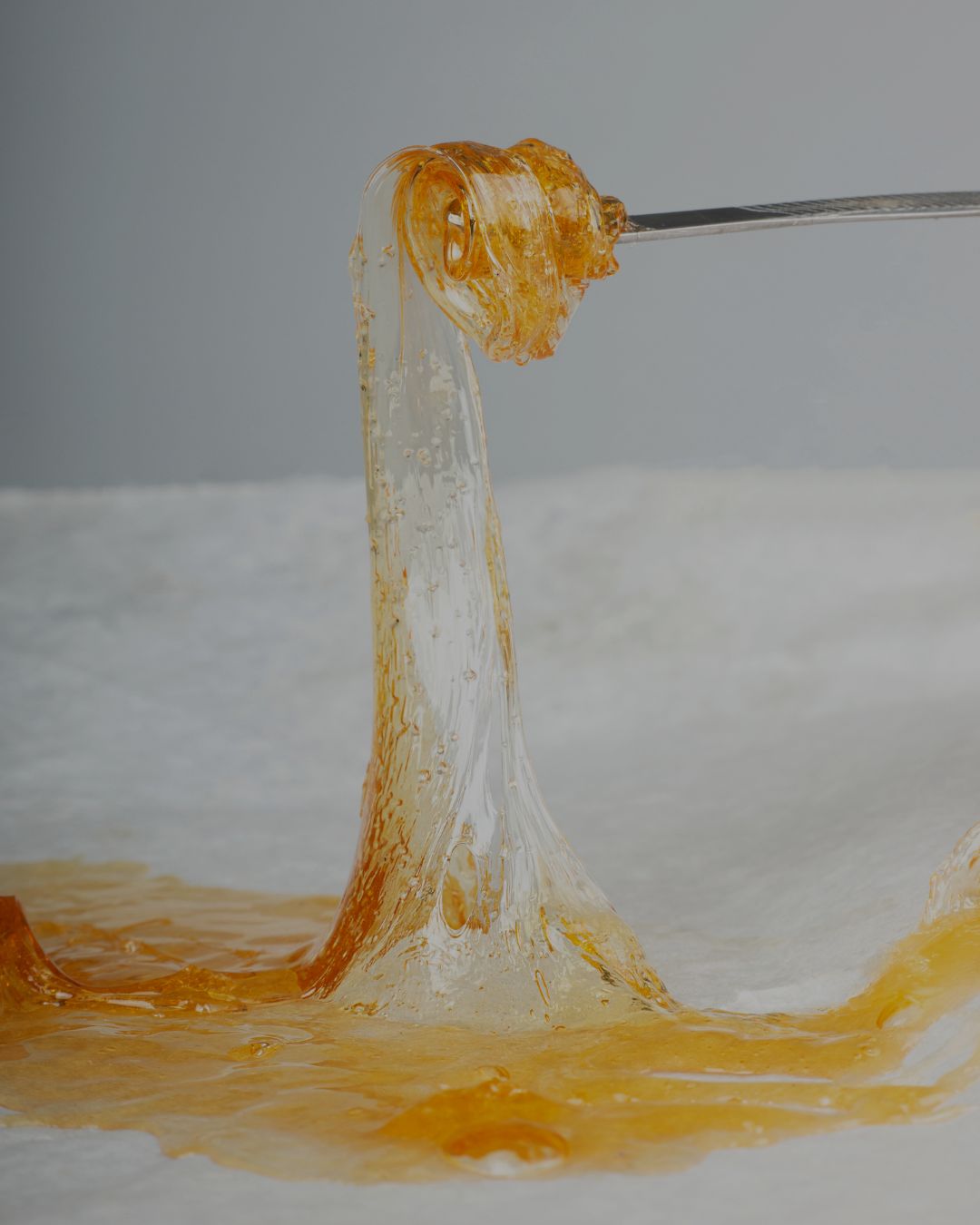Cannabis Concentrates Explained
If you want to “know” cannabis, then you need to know your concentrates.
What are Cannabis Concentrates?
Concentrates, also known as extracts, are substances in which the more desirable properties like cannabinoids and terpenes are processed from the plant’s trichomes to create concentrated forms of cannabis. Concentrates range in forms, colors, and textures depending on the extraction method used to create them.
How Are Cannabis Concentrates Made?
Concentrates can be made from any part of the cannabis plant: dried, cured, or fresh. Some of the most common extraction methods include:
Solventless
Physical Separation – Involves breaking and separating the trichomes from the plant by using shaking or pressing motions, gravity separation, and filtration. The following are examples of “solventless” extraction methods using physical separation:
-
- Water Extraction (ice water hash, bubble hash), where ground plant material, ice, and water are combined in a vessel and agitated until the trichome glands break off the plant and sink to the bottom of the vessel.
- Heat and Pressure Extraction (rosin and hand hash), uses heat and pressure to remove the cannabinoids and terpenes from the plant.
- Dry Sieving/Kief – When the ground plant is sifted by hand or in a mechanical tumbler/grinder with screens that delicately remove the exposed trichomes resulting in a fine powder also known as kief.
Solvent-based
Chemical Extraction – Also known as “solvent-based” extracts dissolve trichomes from the plant by using solvents like butane, propane, ethanol, and carbon dioxide. Chemical extractions produce a wide variety of consistencies, with concentrates coming in forms such as glass, shatter, budder, and oils.
-
- CO2 – carbon dioxide is pressurized in metal tanks until it becomes a supercritical fluid. Then the fluid pulls out the desirable compounds from flower. The fluid is then separated, leaving only concentrates including hash oil, shatter and budder.
- Hydrocarbon – Hydrocarbon extraction typically refers to using butane or propane as a solvent that’s passed through the raw cannabis matter to collect cannabinoids and terpenes. The solvent with the essential oils is then heated up to evaporate off the butane or propane, leaving behind the extract.
- Ethanol – Ethanol extraction is conducted by soaking raw cannabis in ethanol to pull trichomes into the solvent. The cannabis is then removed; the liquid is filtered and the alcohol purged from the extracted material.
Cannabis Concentrate Consistencies
Once the cannabinoids and terpenes have been removed from the plant material, the extract can form into a variety of consistencies. Here are some of the most popular consistencies in today’s market.
Solventless
-
- Dry Sift/Kief
- Hash
- Bubble Hash
- Ice Wax
- Rosin
- Live Rosin
Solvent-based
-
- Sauce
- Sugar
- Distillate
- Crystalline “Diamonds”
- Shatter
- Resin
- Live Resin
- Wax
- Crumble
- Badder
- Budder
The concentrate options can be overwhelming and confusing at first, but they don’t have to be. Our instructors will help you get a clearer understanding of each extract, how they should be consumed, how the consumption will be processed in the body, and so much more when you enroll in our Intro to Cannabis or Dispensary Agent Certification course!

